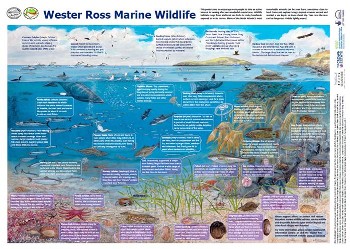Wester Ross Marine Protected Area designated
Posted: Thursday 24 July, 2014 @ 19:03:49

Today the Scottish Government has designated a Marine Protected Area [MPA] for part of the coastal seas around Wester Ross.
The Wester Ross MPA (referred to during the consultation stage as the possible Northwest Sea lochs and Summer Isles MPA) is part of a suite of new MPAs around Scotland designed to contribute to an ecologically coherent network of protected areas for marine species and habitats of nature conservation importance.
The Wester Ross MPA aims to protect and recover areas of maerl and flameshell beds within a larger ‘protected’ area extending from Rhu Reidh to the headland near Reiff. The MPA area includes Loch Ewe, Gruinard Bay, Loch Broom and Little Loch Broom and the area around the Summer Isles.
Correction to earlier version of story: the new Wester Ross MPA provides no addition legal powers for the protection for any of the habitats within the area for which it is designated. The Scottish Government has plans to develop legally enforcable management measures over the next two years.
Until then, Marine Scotland is asking fishermen to respect voluntary management areas over and around small areas of sensitive habitat within the MPA where these have been identified.
Details of the voluntary management areas for the Wester Ross MPA can be found at:
http://www.sff.co.uk/sites/default/files/Wester%20Ross%20MPA%20-%20Voluntary%20measures.pdf
Therfore scallop dredgers will continue to be able to operate within most of the MPA as before, including most of Loch Ewe and most of Gruinard Bay. Even within the new MPA, the precautionary principle has not been adopted and seabed damage will continue.
Over the past 30 years, marine wildlife around Wester Ross, including many wild fish populations, has been damaged following the removal of the three-mile limit for trawlers and dredgers in 1985. For almost 100 years before then, areas of seabed of importance as herring spawning grounds and for juvenile whitefish were protected from damage by mobile fishing gear within 3 miles of the shore.
Wild fisheries remain important to the local economy. Fisheries for nephrops prawns, scallops, lobsters and crabs still provide employment for many local fishermen. However, stocks of adult whitefish (cod, haddock, whiting, plaice) have yet to recover, although juveniles cod, plaice and whiting have been regularly seen by the WRFT sweep netting team in recent weeks.
Wester Ross is also becoming an increasingly popular destination for marine wildlife tourism, much of which is dependent upon the animals which feed on wild fish, including minke whale and other cetaceans, seals and sea birds.
The latest announcement provides an opportunity to develop and demonstrate a more enlightened, evidence-based approach to the management of coastal seas for marine wildlife including wild fish populations. The MPA will be most successful if local communities within and around the MPA are able to provide active support and help with monitoring.
For more information about the new MPAs, please visit: http://www.scotland.gov.uk/Topics/marine/marine-environment/mpanetwork